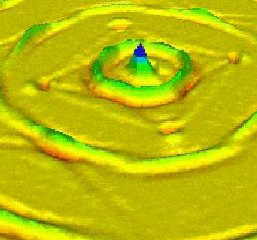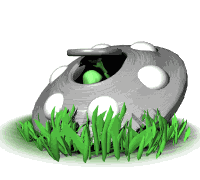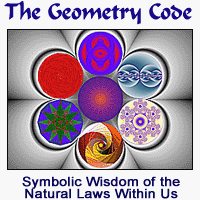Out Like A Lion: Mad March & June’s Grand Cross
‘In Like a Lamb – Out Like a Lion’ – Anon
Traditional wisdom surrounding weather in March Farmers’ Almanac
Lord Byron – whose mother Catherine Gordon was born at Gight in Aberdeenshire – had a healthy disregard for British weather – possibly one of his reasons for self-imposed exile in Italy and Greece. Genetically a Scot, his lineage shows in his:
“English winter – ending in July
To recommence in August”
After my previous long blog on weather, particularly the singular non-summer of 2009, I promised myself I wouldn’t allow it to dominate my consciousness. But circumstances never quite follow the rules and as I’m not alone in experiencing a return to winter over the March 2010 full moon, I think I’m allowed to empathize with others in our shared predicament:
‘What freezings have I felt, what dark days seen’ William Shakespeare
While the extreme North of Scotland may have had all the ‘freezings’ it can possibly endure, I feel sorry for the people of Perthshire who tonight, under this March full moon’s anomalous influence, are being subjected to their seventh storm of sleet and freezing rain this winter/(spring). It certainly fosters strength of spirit.

Human Race in for a rocky ride - Colorado highway blocked by rockfall, fueled by March snow conditions
Colorado – at this time of year the so-called Recreation State, because Aspen welcomes thousands in ‘spring break’ from school – has had yo-yo conditions: similar to those experienced by Vancouver for the Winter Olympics in early February. That means no snow on the Aspen runs (expensive snow-blowers and snow-creation turbines hauled in to coat ski slopes), while a few miles distant at Mount Evans, highways have been blocked by mammoth snowdrifts, rockfalls from heavy snow and, essentially, a return to January.
Snow is currently descending again on Mount Fuji in Japan, at the same latitude as Los Angeles in Southern California.
But it’s nearly over.
American poet Wallace Stevens talked of the ‘distant glitter of the January sun’ and yet we know its light is coming closer now. Days are getting longer. Global clocks have sprung forward.
John Masefield spoke of our challenges during ‘Mad March Days’ in his exquisite poem on ocean traders: ‘Cargoes.’ Metaphors mixed with gold moidores, amethysts and topazes borne by his Spanish galleon, and his peacock-bearing quinquereme take his reader to heights, only to bring him back down to earth with the salt-caked smokestack of his ‘dirty British coaster’ ‘butting through the Channel.’
His spirit could fly, however, in spite of his description of ‘wind like a whetted knife’. He may have felt the chill of British isolation amid a ‘grey mist on the sea’s face’, but he had presence-of-mind to dream of far-off places to stave off the chill days of Mad March.
‘… all I ask is a tall ship and a star to steer her by.’
In these long drawn-out days between winter and spring, we in sodden Scotland do indeed need a star to steer by.
Since Autumn 2008, along with Mars, the solar system’s three largest planets, Jupiter, Saturn and Uranus have been slowly moving into position to form a Cardinal Grand Cross in mid June 2010. A series of Crosses follows on, including one in June 2012 and another in June 2014. This June should give us a taste of what’s to come.In astrology the cardinal signs signal the beginning of each new season: Aries stands at spring equinox; Cancer at summer solstice; Libra at autumn equinox and Capricorn, at midwinter. Energy in cardinal signs is characterized as active, outgoing, taking initiative. Its negative side is associated with lack of stamina or staying power.
Cardinal equals primary, fundamental, an energy standing at a hinge or doorway in time. People whose astrological charts feature cardinal zodiac signs are unafraid to try something new. A cardinal cross signifies a meeting of great influential heavenly bodies at a hinge of the seasons and the upcoming Grand Cross begins on June 25th (three days after solstice) and lasts until August 5th. Its second phase stretches from November 1st until December 26th.In an individual’s zodiac birth chart, the presence of a Grand Cross – or four ‘squares’ – represents a potent combination of conflicting energies. If/when resolved, it can create a determined, dynamic and forceful personality with a strong sense of purpose or destiny.
The individual in the middle of this year’s Cardinal Grand Cross in June is the planet Earth and we earthlings perched on her surface are in for a rocky ride.
At this Cosmic Doorway we the human race will be stretched, pushed, pulled, tested, chewed and, possibly, even spat out by the Cosmic Forces. It will take all our fortitude, peace-of-mind, spiritual discipline and love and devotion to our fellow beings to guide us through this challenging time.
An astrological Cross occurs when four (or more) planets connect in a giant square: two in opposition to one another at right angles to two more, also in opposition. The configuration brings energies into conflict, a period of tension, but is often a catalyst for (spiritual and societal) growth. It is certainly a time of great change.
This June, against a backdrop of Uranus squared Pluto (the planet of birth and death), three days after summer solstice at a time considered sacred in all formative cultures, Jupiter and Uranus will stand in early degrees of Aries in square polarity to a Full Moon standing conjunct Pluto in Capricorn, opposite the Sun.
Age-old superstition and tradition show especial respect and awe for the Full Moon closest to the longest day and this Moon is no exception. Its synchronicity suggests an urgency for Mankind to pay attention.In the third corner Saturn stands alone in late Virgo (on the cusp of cardinal Libra) while the Sun and Mercury in Cancer form the fourth corner of the Great Square or Cross. Polarizing Saturn in a square is the planet Mars (in Cancer), which, since March 12th this year has turned once more to direct motion. This implies a tendency to act rashly and sometimes without discipline: a trait which in the coming Cross could lead to difficulties.
The planets form a cross-grid. Think of it as four people sitting as partners at a bridge table, opposite each other and at right angles to their opponents. Opposing sides use the tension of their position to intuit and understand what hand the other is playing. After a series of push-pull negotiations, a ‘contract’ is reached and the four parties find a meeting place in the middle – a point of balance – where all four may use their skills and unique talents to focus on a central point of force, pave the way for a final resolution.
Slowly, inexorably, dragging their great bulk to stand in giant opposition within identical degrees in the four cardinal zodiac signs come the huge ‘partners’ in the ‘game’: Jupiter, Saturn, Uranus and Pluto – with the Moon and Mars adding spice.
These powerful entities – representative of expansion, discipline, spiritual growth and death – want to express and release their energies fully but are restricted (by the squares) from doing so. The tension thus created will be enormous. However, as the Grand Cross does indeed bring great change and eventually the spiritual strength to grow beyond our narrow vision, there is a powerful message of hope in the configuration.
Psychologist-linguist-astrologer Jessica Murray writes most knowledgeably about a 20-year prelude to this massive shift in human consciousness. Her work includes detailed analysis of the changes society went through starting with the great astrological conjunction – New Age ‘Harmonic Convergence’ in Aquarius of 1987. It continues through the 1989- 2007 conjunction when Saturn held hands with Neptune: from the ‘melting’ of the Berlin Wall (seen as Neptune’s softening influence on rigid societal structures – Saturn) through massive floods in New Orleans and Bangladesh, earthquakes and global warming. She sees this prelude as ‘softening up’ society to prepare ourselves for the coming confrontation.
About the imminent Grand Cross, she writes:
‘It is from the vast, slow-moving outer-planet cycles (Uranus, Neptune and Pluto) that we expect the most far-reaching effects; and when these make major aspects with the social planets (Jupiter and Saturn) as well as with the personal planets (such as the Moon and Mars) at the same time, the rarity of the patterns that result puts them into a category that deserves a unique degree of awe, respect and attention.’
She sees us as having to come to terms with the contrast of the ‘real’ world (Saturn) and the ‘surreal’ (Uranus/Neptune, the ‘quantum field’, ‘Spirit’) in our lives.
Dedication and staying power to follow through on projects and activities are not the strong suit of Cardinal Grand Crosses. And the two oppositions suggest external challenges – our motives and deep beliefs questioned by others. We shall need all our faith, our self-belief and a will to be consistent in our personal connection to Spirit; to show loving intent, a calm center and compassion in dealing with others, possibly amid derision and disbelief.
Both Neptune and Uranus have been traveling in each other’s signs of exaltation: Neptune in Aquarius and Uranus in Pisces (each rules the other’s sign). They’ve been paving the way for the last seven years asking us to open our minds and hearts to our spiritual selves, to incorporate spiritual principles into our everyday lives.
The coming Grand Cross will test our resolve. With planning and forethought, we may still succeed in achieving our goals, but tried and traditional avenues may not be available. Above all, we shall have to take each day as it comes, live and enjoy our increasing awareness of our place in the great unfolding, and be true to who we really are.
The good news is that a Grand Cross involving the outer giant planets brings with it enormous energy which, if used with the power of intention, in loving ways, will open new doors, provide unprecedented opportunities. It may be a time when many will be able to reconnect with their Inner Knowing, their guiding star.
A time to reinvent ourselves.
So while the Lion of March roars outside, dispersing the last ghosts of winter, we may look to the months ahead with hope that we mere mortals may, with the assistance of giants, find a portal through which to step; to create a better world.
Fire Festivals & Persistence of Pasche
‘First come Candlemas
Syne the New Meen
The niest Tiseday efter that
Is Festern’s E’en.
That Meen oot
An’ anither at its hicht
The niest Sunday efter that
Is aye Pasche richt.’
Ancient Scots Easter calculation. Anon.
The Calendar according to the Moon was regular as clockwork. It was reliable, you could see it in the sky and you could set your life rhythms by it. The old Scots rhyme above spoken slowly will make sense even to the least son of the soil of Ultima Thule. But non-Scots may need a little help in translation.
Festern’s E’en – as Hallowe’en – was an ancient calendar fire festival celebrated, like all pre-Christian revelry, at night. And, like Hallowe’en, it still is. Only we call it by another name: Carnival.
Translated simply, it is the evening before the ‘Feast/Festival’. With a capital F, this celebration was one of the greatest fire festivals in the Celtic Year. When it became absorbed into the Christian calendar, its importance and significance to the populace was so great, that it was deemed necessary to give it a place of prominence second only to Christmas. As such it has remained. The festival that precedes Easter is throughout the world celebrated with fire and puppetry,processional and masqued balls, dance and music and food and drink.
If you ask a South American about Carnival, ‘Carnaval’ in Portuguese, he will tell you they prepare for it all year round. In some cultures it has become almost more important than Christmas – a reversion to type, backtracking to pre-Christian times.
In Brazil, it makes complete sense to hold Carnaval precisely on its February moon date in the ancient calendar because in Rio de Janeiro and Buenos Aires it is full-blown summer. By contrast, German Fasching, held similarly in February, is pretty chilly dancing in the noctural streets of northern Hamburg!
Carnival used to be held in the Bahamas in February too, when spring is at its height and the casuarinas blow carefree along Nassau Beach. But in the summer of 1965, Chubby Broccoli and Sean Connery made a James Bond film set on Paradise Island and commissioned the Carnival Committee to stage an ‘extra’ Carnival, so they could weave festive fiery scenes into ‘Thunderball’; since then Bahamian Carnival has been a summertime festival. Similarly, the London Carnival of Notting Hill, begun in 1964, is held on the last weekend in August. No connection to Lent or Easter any more.
But originally, before the Gregorian calendar took over calculation and reckoning by the moon in 1582, Carnival was high festive season in that ancient stream of festivities used by Man to celebrate the return of the Light to a dark winter world.
Candlemas, as I’ve mentioned before, is the first glimpse of light waxing and adding grace to the darkest days of winter. On February 2nd – or Bride’s Day, before solar months took over as calendrical norm – the measure of light from the heavens increases to such a degree that birds begin to mate, petals on spring flowers open and the Earth softens its frozen grip.
In lunar terms, the first New Moon of the second month (Gregorian) was celebrated in every northern hemisphere culture planet-wide from prehistoric times. From Buddhist to Inuit culture the return of light to nurture the earth’s crucial growing plants was a calendar custom worth celebrating.
When Christian calendar calculators were devising Roman Church high and holy days, they took care to incorporate these ancient fire rites as an integral part of Christian culture and ‘lore’. it did not do to lose a single ‘soul’ in the transition from a pre-Christian to a Christian world.
And, as it was a long-standing tradition for local people to mark ancient quarter days – the solstices and the equinoxes – with festivals of fire, it seemed right that they should transit unaltered into the Christian calendar: marked instead with candlelight inside church buildings.
Christmas was chosen at the time of (northern) winter solstice when the ‘ignorant’ (pagan) desperately needed to celebrate the return of ‘light to the world’. Christ was called the ‘Light of the World’. The Son of the Sun.
Midsummer was fully taken up with a light celebration of its own – in northern latitudes the longest days of the year brought bountiful harvest and genuine thanksgiving by a rural population for the gifts of the earth continuously provided from midsummer through to Lammas, an August ‘cross-quarter’ day. No Church overlay was necessary; nevertheless Roman Catholicism superimposed the feast of John the Baptist on midsummer’s day and frowned heavily on pagan corn dollies and such Celtic fripperies perpetuated by an agricultural society.
The Equinoxes, however, required more serious contemplation.
Most rural (so-called ignorant) converts were aware of the movement of both sun and moon. While that may appear to us today to be rather sophisticated intellectual knowledge, it was commonplace then to note changing seasons, hours of light and dark and the phases of the moon. When equinox arrived it was – in the human mind at least – a miracle that every place on earth had exactly the same number of hours of light and dark for one earth period of 24 hours. The sun rose at 6 and set at 6 on every man, woman, child and beast on earth. The phenomenon was in itself worth celebrating. In astronomical terms, the event occurs precisely at the moment the Sun (traveling along the ecliptic) appears to cross the celestial equator, and while ancient Man may not have known that added sophistication, his life was changed by its occurrence twice in every year. In addition, he celebrated the spring (cross-quarter) festivals of Wesak, Beltane, May Day, along with any events providing an excuse for Morris and maypole dancing, The Church allowed these to continue, so long as the requisite saints were also remembered and offerings given.
While Archangel Michael was given dominion over autumnal equinox, Easter was chosen as a fitting ‘high’ celebration to take over the vernal equinoctial light-and-dark balance.
What put a spanner in the works was that – late in the seventh century – when two contemporary Christian systems were running alongside in mutual cooperation, the internal systems within the Celtic and Roman Churches came to a clash; an impasse.
Hugely influential, powerful and wealthy King Oswiu of Northumbria had been happy to run his Christian nation along the lines of Columba’s Celtic (thirteen-month lunar) calendar issued and maintained from Iona. This Celtic doctrine conveniently recognized the King as head of religious affairs. His Anglian Queen Eanfled, a devout Roman Christian recognized not the King but the Pope as head of the Church. They might have reconciled their differences, had it not been for a calendrical anomaly which in some years had the King ordering huge feasts for Easter at exactly the moment when his Queen was still fasting in Lent. Because another such year was due to happen in AD665, with the assistance of Wilfrid, new abbot at Rippon, and recently returned from Gaul and Rome, the King called the Synod of Whitby in AD664 and led a thorough investigation into the rites and rituals of both systems. The event is described in detail by Jarrow churchman Bede (673-735) who completed his Ecclesiastical History of the English People in 731.While the Synod changed lives, split families and royal houses, even intra-kingdom alliances, thereafter church festivities centred on Easter were standardized throughout the land and celebrated in accordance with Roman custom.
Easter remained the highest festival of the Christian church until the Scots Reformation when (after 1660) presbyterian austerity superimposed simplicity, reduced dogma and a return to ‘speaking to God’ directly.
For the rest of the British Isles, however, and for descendants and dependents the world over, Easter remains one of the great festivals of the Christian calendar.
Curiously, for a celebration washed, ironed and folded so neatly by successive synthesized systems – prehistoric, early-historic, pre-Christian, Celtic and Roman Christian – Easter emerges as a supreme highlight in the Church year.
Its one concession to its pagan past is that is remains to this day a date fixed according to the Moon.
And, in order not to offend other faiths which, like Anglian Eanfled, might take offence at the bulldozing approach (e.g. Spanish Inquisition, Salem witch trials), there is a built-in mechanism of calculation which ensures that Easter and Passover never collide and that the Christian High Festival should never occur BEFORE equinox.
So the little rhyme above, translated, simple enough and sympathetic to Scots ears, sums up global lead-time to Pasque, Pasche, Oster/Easter, the pagan event of maiden-goddess Eostre/Ostara, the Highest Festival in the Christian Calendar: when in the High Days before the Fast of Lent, the Roman Catholic world celebrates. From Italian Carnivale to German Fasching (Fastnacht, the eve before the Fast), prelude to French Pasque, in Portuguese Carnaval and on ‘Fat Tuesday’ of New Orleans’ Mardi Gras, bead-festooned feasters and revellers make merry because tomorrow their stomachs will die.The modern gesture to Pancake or Shrove or Fat Tuesday (Festern’s E’en) is not lost on marketers for supermarket chains who do a roaring trade in maple syrup and readymix batter. It’s the ‘stock up while the going’s good’ mentality, because the body must endure the subsequent fast of Lent for a regulation 40 days. Once more the Roman Church succeeded in condensing multiple events in Christ’s life into one festival: this fast represents the period of time He spent without food while meditating in the desert.
Nowadays, nobody questions that its immediate successor in the calendar is representational of His death and resurrection, when historically the two events happened years apart. Once again, ancient symbolism is used to gloss over detail.
‘First arrives Candlemas (Feast of Bride); Then the New Moon
The following Tuesday will be ‘Fastnacht’/Fasching or Shrove Tuesday
Allow that ‘moon’ to wax and wane
And watch till the next moon is full
The Sunday thereafter will be Easter Day.’
translation by Scots descendant, non-AnonIt worked for King Oswiu in 664. I can assure you, the calculation works still!
©2010 Marian Youngblood



























